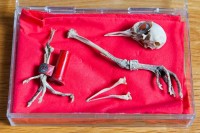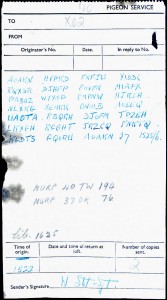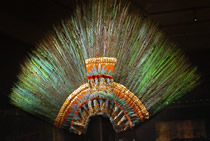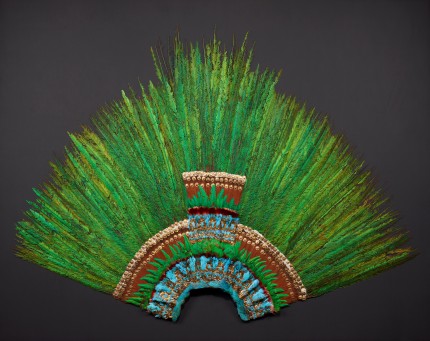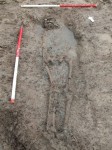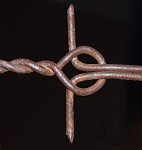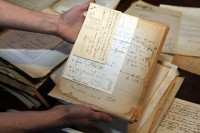 While renovating a historical brick building in Denver that once housed a pharmacy, Alissa Williams and her husband Mitch discovered a cache of 250 letters and postcards sent from Japanese-Americans being held at internment camps during World War II. The letters had been sent to the T.K. Pharmacy, owned by Coloradan of Japanese descent Thomas Kobayashi and managed during the war by his brother-in-law, Yutaka “Tak” Terasaki. Written in Japanese and English, the notes came from internment camps in California, Wyoming, Arizona, Arkansas, Utah and Colorado and requested everything from chocolate to cough drops to condoms and cold cream.
While renovating a historical brick building in Denver that once housed a pharmacy, Alissa Williams and her husband Mitch discovered a cache of 250 letters and postcards sent from Japanese-Americans being held at internment camps during World War II. The letters had been sent to the T.K. Pharmacy, owned by Coloradan of Japanese descent Thomas Kobayashi and managed during the war by his brother-in-law, Yutaka “Tak” Terasaki. Written in Japanese and English, the notes came from internment camps in California, Wyoming, Arizona, Arkansas, Utah and Colorado and requested everything from chocolate to cough drops to condoms and cold cream.
Internees could make as much as $19 a month doing jobs around the camp, and some of them were able to bring some money from home. Newspapers published in the camps carried advertising for products that could be purchased by mail, and mail order catalogs also floated around. Some catalogs and advertising were discovered among the cache of letters.
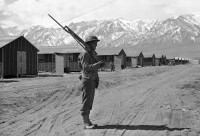 Neither Thomas Kobayashi nor Tak Terasaki are still with us, but Tak’s younger brother Sam says that Tak was a longtime member of the Japanese American Citizens’ League, a non-profit found in 1929 dedicated to Asian-American civil rights. Tak’s wife Mitchie worked for Ralph Carr, Governor of Colorado from 1939 to 1943. Carr put his career on the line to advocate for the rights of interned Japanese-Americans while he was governor. He spoke out publicly against internment, saying it violated the Constitution, and he welcomed displaced Japanese-Americans into the state even though paranoia and racial animus against them were widespread. His courageous stance did in fact cost him his political career — he lost a senate race in 1942 and never again held elected office — but it won him an enduring reputation as a voice for justice under the hardest of circumstances.
Neither Thomas Kobayashi nor Tak Terasaki are still with us, but Tak’s younger brother Sam says that Tak was a longtime member of the Japanese American Citizens’ League, a non-profit found in 1929 dedicated to Asian-American civil rights. Tak’s wife Mitchie worked for Ralph Carr, Governor of Colorado from 1939 to 1943. Carr put his career on the line to advocate for the rights of interned Japanese-Americans while he was governor. He spoke out publicly against internment, saying it violated the Constitution, and he welcomed displaced Japanese-Americans into the state even though paranoia and racial animus against them were widespread. His courageous stance did in fact cost him his political career — he lost a senate race in 1942 and never again held elected office — but it won him an enduring reputation as a voice for justice under the hardest of circumstances.
According to Colorado State Historian Bill Convery, the T.K. Pharmacy was one of the few pharmacies owned by Japanese-Americans in the west, since all the property of Japanese-Americans in the coastal west had been confiscated by the government and their owners interned.
[The Denver pharmacy] could offer products favored by internees – who had one week to pack up two suitcases and sell any assets – and they might have felt more comfortable dealing with a Japanese-American-owned company, given tensions during the war.
Internees couldn’t bring much to camp and they didn’t know where they were headed or how long they’d be gone. “So as much as anything could soften the blow of that unimaginable situation, those businesses did what they could,” Convery said.
 It’s not clear why the documents were hidden in the wall. There were letters from internment camps out in the open as well, so why this particular collection was squirreled away is a mystery. The building had been vacant for seven years when the Williamses purchased it in 2010.
It’s not clear why the documents were hidden in the wall. There were letters from internment camps out in the open as well, so why this particular collection was squirreled away is a mystery. The building had been vacant for seven years when the Williamses purchased it in 2010.
Alissa and Mitch Williams have notified the Japanese American National Museum in Los Angeles of their find. The museum is currently in the midst of a major initiative to collect the oral histories, pictures, and letters of internees, so I’m sure they’ll be very much interested in such a unique perspective into the daily needs and wants of interned Japanese-Americans.
The Remembrance Project was launched earlier this year on February 19th, the 70th anniversary of the signing of Executive Order 9066, the presidential order signed by Franklin D. Roosevelt which authorized the military to declare parts of the United States areas “from which any or all persons may be excluded.” That order led to the internment of people with “Foreign Enemy Ancestry” living in the designated areas, primarily the Pacific coast. The initiative seeks to make a permanent online museum of the memories of people who were interned as a result of Executive Order 9066. You can read some of the many tributes that have already been uploaded to the site, or you can donate money to the project or upload a tribute of your own by interviewing someone you know who experienced the internment camps.
Here is George Takei reading some of the memories of interned Japanese-Americans and then relaying his own memories of the day he and his family were taken from their home by US soldiers and made to live in a stable at the Santa Anita racetrack. The Takeis would go on to be interned at the Rohwer War Relocation Center in Arkansas and at the Tule Lake War Relocation Center in California.
[youtube=http://youtu.be/BY_CS7QUJks&w=430]
